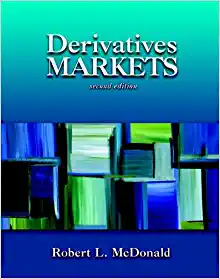
I would be willing to pay to more than the selected amount to help with this assignment in the next 7 hours.
Derivative Securities Assignment 2 F421 (2018 Spring) Due: 02/08/H Problem 1. A fund manager has a portfolio of assets that is worth $60 million with a beta of 0.75 with respect to the Nasdaq index. Assume that the alpha and expense ratio of the portfolio are both zero. The manager is concerned about the performance of the Nasdaq market over the next three months and plans to use six-month mini futures contracts on the Nasdaq 100 to hedge the risk. The current level of the index is 5914. One contract of mini Nasdaq 100 futures is on $20 times the index. The risk-free rate is r = 0.65% per annum. The dividend yield on the Nasdaq index is y = 1.12% per annum. (a) What is the theoretical futures price for the sixmonth mini Nasdaq 100 futures? (b) If the fund manager ignores the mismatch between the futures maturity and the hedging period and simply uses formula we discussed in class, how many futures contracts (in whole number) will he long or short, intending to eliminate the exposure to the market over the next three months? (c) How much does the fund manager gain (lose) on his futures position if the market index in three months turns out to be 4731, 5323, 5914, 6505, and 7097? List the prots and losses (P/L) corresponding each index level in a table. (d) Suppose there are no idiosyncratic shocks to the portfolio returns. (This is true if the portfolio consists only the index and three-month Treasury bills.) Calculate and report the P/L of the portfolio when the index nishes in three months at the ve levels listed in question (b). To simplify the calculation, you can approximate the simple k-month dividend yield by y x [k/ 12), i.e., ignore the effect of continuous compounding. Similarly, approximate the k-month simple interest rate by r x (k f 12). (e) Calculate the fund manager's P/ L and return on the hedged portfolio when the index in three months equals the ve levels listed in question Cb). (f) Explain why the hedge is not perfect even when there are no idiosyncratic shocks to the portfolio returns. Problem 2. Suppose a portfolio has assets that are worth $60 million, and the S&P 500 index is at 1200. Assume that the beta of the portfolio is 2.0, and there is no alpha. The expense ratio of the portfolio is 3% per year. The dividend yield of the index is also 3% per year. The risk-free interest rate is 5% per year. (The expense ratio, dividend yield, and interest rate are simple rate in yearly compounding.) (a) How many contracts of put options should be purchased to hedge the risk that the value of the portfolio falls below a oor value in one year? (b) To be simple, although unrealistic, let us ignore the cost of the put options. If you want to set the oor value of the hedged portfolio to $54 million, what should be the strike price in the put options? Demonstrate your results of the hedge for various SSrP 500 index levels by creating the following spreadsheet. Assignment 2: page 1








